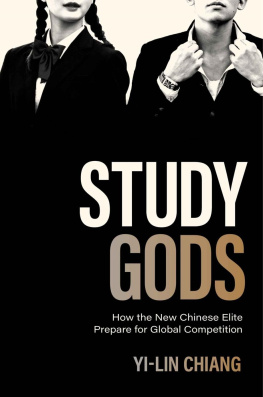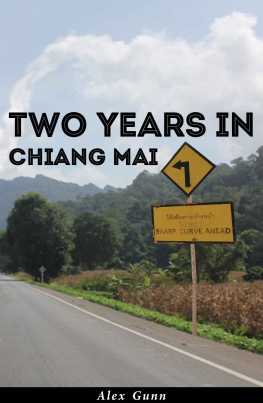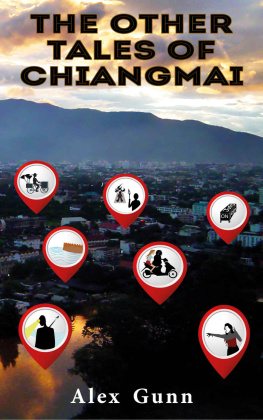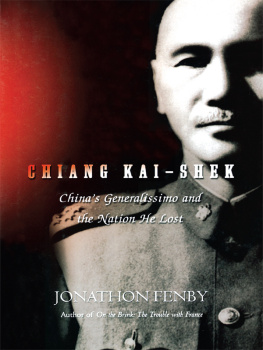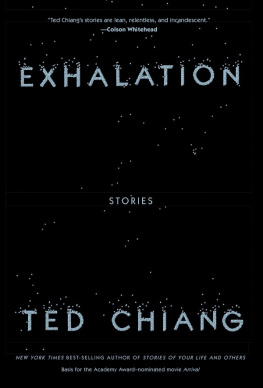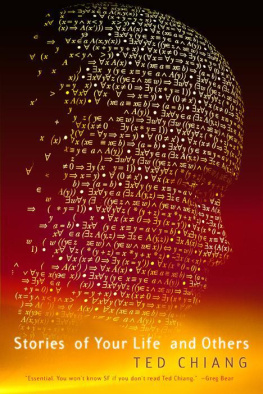Kok Chiang Tan - My Nantah Story
Here you can read online Kok Chiang Tan - My Nantah Story full text of the book (entire story) in english for free. Download pdf and epub, get meaning, cover and reviews about this ebook. year: 2019, genre: Politics. Description of the work, (preface) as well as reviews are available. Best literature library LitArk.com created for fans of good reading and offers a wide selection of genres:
Romance novel
Science fiction
Adventure
Detective
Science
History
Home and family
Prose
Art
Politics
Computer
Non-fiction
Religion
Business
Children
Humor
Choose a favorite category and find really read worthwhile books. Enjoy immersion in the world of imagination, feel the emotions of the characters or learn something new for yourself, make an fascinating discovery.

- Book:My Nantah Story
- Author:
- Genre:
- Year:2019
- Rating:4 / 5
- Favourites:Add to favourites
- Your mark:
- 80
- 1
- 2
- 3
- 4
- 5
My Nantah Story: summary, description and annotation
We offer to read an annotation, description, summary or preface (depends on what the author of the book "My Nantah Story" wrote himself). If you haven't found the necessary information about the book — write in the comments, we will try to find it.
My Nantah Story — read online for free the complete book (whole text) full work
Below is the text of the book, divided by pages. System saving the place of the last page read, allows you to conveniently read the book "My Nantah Story" online for free, without having to search again every time where you left off. Put a bookmark, and you can go to the page where you finished reading at any time.
Font size:
Interval:
Bookmark:

My Nantah Story: The Rise and Demise of the Peoples University
Tan Kok Chiang, 2017
ISBN 978-981-11-4307-6 (Paperback)
ISBN 978-981-14-0501-3 (E-BOOK)
Published under the imprint Ethos Books
by Pagesetters Services Pte Ltd
#06-131 Midview City
28 Sin Ming Lane
Singapore 573972
www.ethosbooks.com.sg
www.facebook.com/ethosbooks
The publisher reserves all rights to this title.
Except for the quotation of short passages for the purpose of criticism and review, no part of this publication may be reproduced, stored in a retrieval system, or transmitted, in any form or by any means, electronic, mechanical, photocopying, recording or otherwise, without the prior written permission of the publisher.
Cover design by Bayu Prasetyo Nugroho
Back cover photo of original Nantah Arch Gate, 2017 by Fong Hoe Fang
Page design by Maliah Zubir
Layout and book design by Word Image Pte Ltd
Printed by Markono Print Media Pte Ltd, Singapore
1 2 3 4 5 6 21 20 19 18 17
First published under this imprint in 2017
Typefaces: Din; Minion Pro; Cairo
Material: 70gsm Prima Antique Cream Bulk 2.0
National Library Board, Singapore Cataloguing in Publication Data
Name(s): Tan, Kok-Chiang.
Title: My Nantah story : the rise and demise of the people's university / Tan Kok Chiang.
Description: Singapore : Ethos Books, 2017. Identifier(s): OCN 995068448 | ISBN 978-981-11-4307-6 (paperback)
Subject(s): LCSH: Nanyang University--History. | Nanyang University--Alumni and alumnae. | Chinese language--Study and teaching (Higher)--Singapore--History. | Education, Higher--Political aspects--Singapore. | Universities and colleges Singapore--History.
Classification: DDC 378.5951--dc23

Dedicated to my father
Tan Chiang Sai
who sent me to Nantah
thus opening for this Old Rafflesian
a Brave New World
Tan Kok Chiang in his book My Nantah Story: The Rise and Demise of the Peoples University , describes this memorable event by quoting quite extensively from Pan Kuo Chu, who was directly responsible for organising the occasion, and academic Yao Souchou. According to Yao, the Governor of Singapore, Sir William Goode, who was to officiate the ceremony, arrived two hours late and only unveiled the commemorative plaque at seven in the evening.
With the Governor gracing the occasion, it would appear that Nanyang University was fully supported by the British colonial government. This was not so, especially at the beginning. As Kok Chiang so amply and clearly describes in his book, the university faced many obstacles, right from the day it was conceived. It is the detailed description of these obstacles and persecution that forms almost his entire book. Kok Chiang may not consider himself to have completed a full and comprehensive story of Nanyang University, but what he has written covers an important and also a major aspect of Nantahs history.
After World War II, some Chinese community leaders in Singapore had already begun discussing the need to establish a private university using Chinese as the medium of instruction. In 1950, the Hokkien Association bought a piece of land in Jurong on which to build a university that many dreamed of. About a year later, a well-known multi-millionaire businessman, Tan Lark Sye, publicly proposed that a university be built. He started the ball rolling by giving a large donation and called upon the Chinese community to donate. Rich and poor, from business tycoons to rickshaw pullers, not only from Singapore but also Malaya and other parts of Southeast Asia, responded generously.
By quoting very extensively from statements and speeches made by Tan Lark Sye, who became the founding chairman of Nanyang University, Kok Chiang explains elaborately the rationale for forming the university. Firstly, it was to be an apex of the Chinese education system, which has long been sustained with private funds from the Chinese community, and to enable those mainly from the Chinese secondary schools who qualified to continue their education at university level. Secondly, it was to help preserve the Chinese language and culture that the Chinese have always been proud of but which was facing a serious challenge from the dominant colonial English language and culture.
Nanyang University was formed under the Company Act and enrolled its first batch of students in 1956. It was popularly upheld as a true peoples university. Therefore, it was no surprise that thousands wanted to attend its inauguration, thus causing the massive traffic congestion mentioned above. But, unfortunately, even before its formation, Nantah was opposed by the likes of Sir Sydney Caine, Vice Chancellor of University of Malaya, Sir John Nicoll, the Governor of Singapore, and Malcom MacDonald, the British High Commissioner for South East Asia, among others. They all echoed the position taken by the Colonial Office.
But there were also well-known people supporting it, although not so many. Among them were Tan Cheng Lock, a respected Chinese leader in Malaya, Han Suyin, an internationally renowned novelist, and David Marshall, one time Chief Minister of the Labour Front government in Singapore. But after Marshall resigned, his successor, Lim Yew Hock, with the government he led, did not share Marshalls enthusiasm. Even the self-proclaimed socialist PAP government led by Lee Kuan Yew also expressed disfavour towards the existence of the Peoples University.
The main argument of those who opposed Nanyang University was that it would cater exclusively to Chinese students with a Chinese language education background, and thus would not help in the government effort to create the so-called inter-ethnic unity. It was strongly implied that any new university should be open to students from all ethnic groups and should preferably be modelled on the University of Malaya, which was formed in 1949, and teaching in the English language. They opined that already having one university was enough and feared the danger that the proposed Nanyang University could become a breeding ground for communists or pro-communist activists.
But the United States government had a different idea from the British colonial office. It argued and managed to convince the latter that the new university should and could be turned into an effective anti-communist institution. Thus, almost immediately after, the Colonial Office changed its mind and all those who opposed the conception of Nanyang University made a volte-face. Malcom MacDonald and a few others made symbolic financial contributions to the university. That also explains why Governor Goode was willing to officiate its inauguration.
Font size:
Interval:
Bookmark:
Similar books «My Nantah Story»
Look at similar books to My Nantah Story. We have selected literature similar in name and meaning in the hope of providing readers with more options to find new, interesting, not yet read works.
Discussion, reviews of the book My Nantah Story and just readers' own opinions. Leave your comments, write what you think about the work, its meaning or the main characters. Specify what exactly you liked and what you didn't like, and why you think so.

